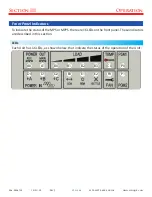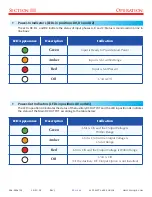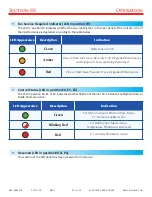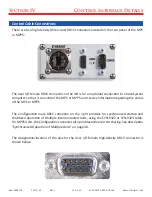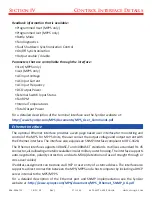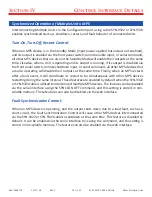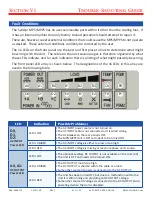
Section VI
Trouble-Shooting Guide
006-0006715 10/31/18
Rev J
43 of 44
MPS-MPPS-4000 Guide
www.synqor.com
Three other conditions should be mentioned:
• The fans are off when the MPS/MPPS Unit is running
It is normal for the fans to be off, even if the Unit is running and delivering power to the load,
as long as the temperature of the Unit is low enough. If the Fan Service Required LED (F0) is
green, both of the fans are OK, even if they are not running.
•
The MPS/MPPS Unit does not turn off when the ON/OFF switch is pushed down
When the ON/OFF switch on the front panel is pushed down, the Unit does not respond to this
signal for approximately 1 second. This is done to ensure that the Unit is not accidently turned
off. If the user does not hold the ON/OFF switch in the OFF position for a full second before
releasing it, the Unit will not turn off.
•
MPPS Units do not share current evenly
MPPS Units must have the exact same programmed output voltage in order to share properly.
The active current sharing algorithm will not attempt to share with Units that have a different
programmed output voltage.
Consider two Units in parallel. If one is set to 28000 mV and the other is set to 28001 mV, the
active current sharing algorithm will not run.
Other possible situations that are the result of external issues that a user could
likely correct are related to:
•
Loads that draw a large surge of current at start-up
Some loads draw a very large amount of current when an input voltage is first applied to them.
This might happen when the Unit is first turned on if the load is already connected to the Unit.
Or it may happen when the load itself is turned on and/or connected to the DC OUTPUT of a
Unit that is already running. Common examples of such loads are motors and incandescent
lights, but some electronic equipment can also display this characteristic.
Several problems could arise with such a load:
▪ A newly started load disturbs the existing Unit loads.
If this disruption of existing loads is a problem, then the solution is to make sure the loads
that display this start‑up surge characteristic are all started first, or that all loads are started
at the same time.

